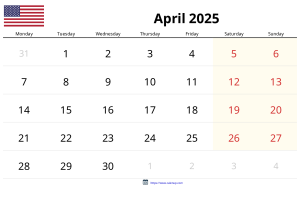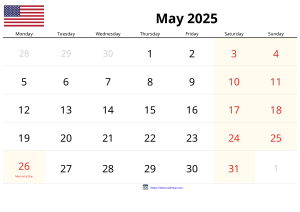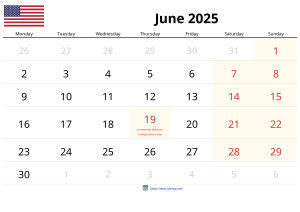The Australia Calendar is an essential tool for those who wish to plan holidays and celebrations throughout the country. With various commemorative dates, from national holidays to local festivals, it is important to know the traditions and opportunities that each of these dates offers. Understanding the calendar can enrich your cultural and social experience, allowing you to actively participate in local celebrations.
Being aware of the holidays and events in the Australian calendar can transform your view of the country and its traditions. Each celebration carries a unique story and the chance to connect with the local culture. Therefore, having access to an updated calendar in PDF or Excel format can be extremely useful for planning trips, events, or even enjoying the festivities in your own community.
Australia's National Holidays Calendar
Australia has a rich national holidays calendar that celebrates both the history and culture of the country. One of the most important holidays is Australia Day, celebrated on January 26. On this date, Aussies commemorate the arrival of the First Fleet from Britain in 1788 and reflect on national identity. Festivities include parades, fireworks displays, and community events in various cities, promoting a strong sense of unity. Additionally, Australia Day serves as an opportunity to discuss issues regarding the history and rights of Indigenous peoples.

Another significant holiday is Anzac Day, celebrated on April 25, which honors the Australian and New Zealand soldiers who fought in the First World War. Remembrance ceremonies are held across the country, starting with dawn services, followed by parades and community events. This holiday is a moment of reflection and respect, uniting communities in honor of those who served and sacrificed their lives for the nation.

In addition to these, Australia celebrates Labour Day on different dates, depending on the state. This holiday recognizes the achievements of workers and the labor movement. Celebrations typically include public events, festivals, and demonstrations highlighting the importance of work and workers' rights. Thus, the national holidays calendar reflects not only history but also the values and diversity of Australian society.
Regional Holidays and State Celebrations
Regional holidays in Australia vary significantly between states and territories, reflecting local traditions and cultural diversity. For example, the Queen's Birthday is celebrated on different dates, depending on the state, and is an opportunity to pay tribute to the Queen of England. Many cities organize events, including festivals, sports competitions, and school holidays, providing a moment of community celebration.

Another important holiday is the Melbourne Cup Day, which takes place on the first Tuesday in November. This horse race is an iconic event, attracting national and international attention. Besides being a day of racing, many Australians host parties and events, wearing elegant outfits and extravagant hats. The Melbourne Cup is not just a race; it is a celebration of Australian culture and entertainment.

In addition to traditional holidays, many states celebrate local events, such as the Adelaide Festival and the Sydney Festival, which attract tourists and locals. These festivals include a variety of cultural activities, such as music, theater, and art, and provide a platform for emerging and established artists. State and regional celebrations are essential to Australia's cultural identity, promoting local pride and diversity.
Religious and Commercial Events Throughout the Year
Religious events in Australia are varied, reflecting the diversity of the population. Christmas, celebrated on December 25th, is one of the most important holidays, marking the celebration of the birth of Jesus Christ. Traditions include family dinners, gift exchanges, and religious services. In addition, cities are often decorated with festive lights, creating a magical atmosphere during the holiday season.
Another significant religious event is Easter, which occurs in March or April. Australians participate in religious services, and many families gather to celebrate the resurrection of Christ. The tradition of Easter egg hunts is popular among children, symbolizing new life. Celebrations often include family meals and community events, promoting a sense of belonging.

In addition to religious holidays, many commercial events are highlighted in the Australian calendar. Black Friday, for example, has gained popularity in recent years, boosting sales in stores and online. During this date, consumers take advantage of significant discounts, and businesses prepare to attract customers with special promotions. This commercial phenomenon shows the global influence on local traditions and reflects changes in consumption habits.
Time Zones of Major Australian Cities
Australia spans several time zones, which can cause confusion for those planning events or trips. The country is divided into three main time zones: Australian Eastern Standard Time (AEST), Australian Central Standard Time (ACST), and Australian Western Standard Time (AWST). Major cities like Sydney and Melbourne follow AEST, while Adelaide follows ACST and Perth follows AWST. This division is crucial for the coordination of national and international events.
Daylight saving time is also applied in some regions, changing the clocks at certain times of the year. In cities that adopt daylight saving time, clocks are set forward by one hour, usually between October and April. This means that, for example, Sydney and Melbourne have different times during this season, which can impact event scheduling. It is important for travelers and event organizers to be aware of these changes to avoid conflicts.
The table below summarizes the times of major Australian cities in relation to UTC (Coordinated Universal Time):
| City | Time Zone | UTC |
|---|---|---|
| Sydney | AEST | UTC+10 |
| Melbourne | AEST | UTC+10 |
| Adelaide | ACST | UTC+9:30 |
| Perth | AWST | UTC+8 |
This information is essential for facilitating communication and event organization among the different states and cities of Australia.
Time Zone Comparison: Australia and Other Countries
When it comes to time zones, Australia can be challenging for those in other countries. For example, the time difference between Sydney (AEST) and New York (EST) can vary from 14 to 16 hours, depending on daylight saving time in both locations. This means that when it is morning in Sydney, it may already be the previous evening in New York. This difference should be considered especially by companies operating on both continents.
In comparison, London (GMT) also has a significant difference with Australia. During daylight saving time in Australia, Sydney to London and Melbourne to London are 11 hours ahead. This can impact business meetings, live events, and product launches, as schedules need to be organized to accommodate participants in different parts of the world.
Moreover, the time zones in Australia can affect tourism, as visitors planning their trips need to be aware of the differences. Often, airlines and travel agencies provide information about time differences to help tourists organize themselves. Therefore, it is essential for travelers to pay attention to these details when planning their activities in Australia.
Conclusion
The Australia Calendar is an essential tool for anyone looking to understand and keep track of the holidays and celebrations in the country. With a well-structured calendar, it is possible to plan trips, events, and leisure time more efficiently. This organization makes life easier for citizens and tourists, allowing everyone to make the most of the commemorative dates, which are rich in culture and traditions.
Furthermore, by providing the calendar in formats such as PDF or Excel, we ensure that this information becomes accessible to all. This means that anyone can easily consult and adapt their plans according to local celebrations. The flexibility of these formats offers a personalized experience, allowing each individual to organize themselves in the best possible way, respecting the particularities of each festive date.




